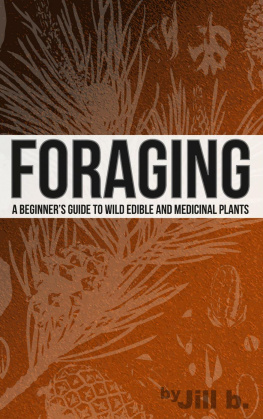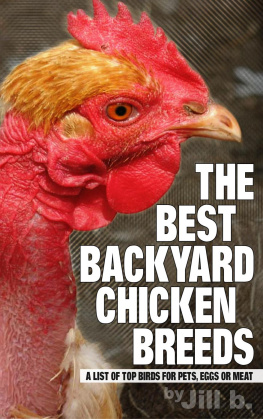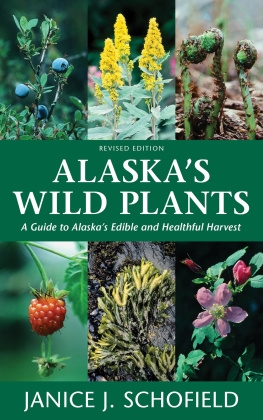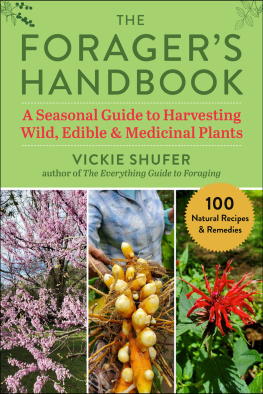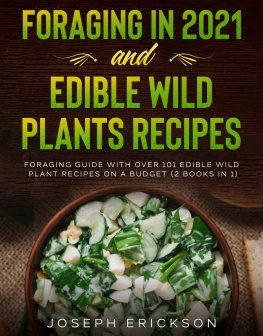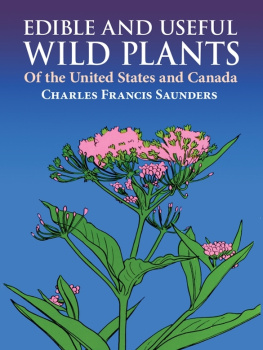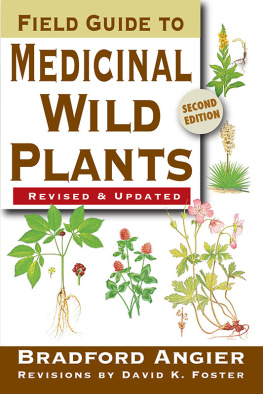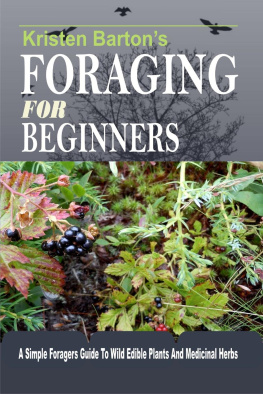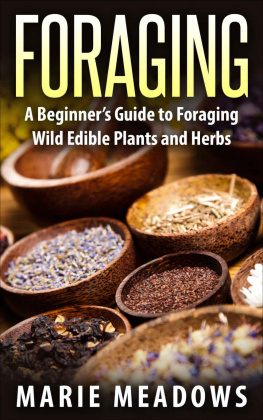Foraging
A Beginners Guide to Wild Edible and Medicinal Plants
By Jill b.
Copyright 2014
All Rights Reserved
Sign up for my newsletter and get THREE books for free :
HOW TO KEEP BACKYARD CHICKENS
CAN DOS & DONTS
THE MODERN AMERICAN FRUGAL HOUSEWIFE
Click here to get started: http://byjillb.com
Table of Contents
Introduction
S tatements in this book have not been evaluated by the Food and Drug Administration. Information in this book is not intended to diagnose, treat, cure or prevent any disease.
No claims are made for the efficacy of any herb nor for any historical herbal treatment. In no way can the information provided here take the place of the standard legal medical practice of any country. Many plants were used for a wide range of illnesses in the past. However many historical uses have proven to be ineffective for the problems to which they were applied.
This book should be treated as a guide and not a manual. There are too many plants and plant variations just in North America alone for me to cover everything you could possibly encounter. Just as someone who is unfamiliar with what a caribou and an elk looks like may not be able to distinguish between them, the same goes with distinguishing plants. Being able to distinguish between plants that grow in your area takes time and experience.
Always check with a local expert before using or consuming a wild plant that you are not familiar with. Only a local expert can properly distinguish plants that grow in your area. A good place to start looking for an expert is at, or through your local County Extension Office. They might even be able to help you identify some of your plants for you.
There are over 100,000 edible plants worldwide. Only a tiny fraction of these plants end up in your grocery stores. Some plants, like purslane, are common foods in other countries. Others, like the common dandelion are starting to show up seasonally in some farmers markets and co-op markets. You might even find it at Whole Foods!
Many forageable plants grow regionally. For example, you might be able to forage for kudzu and passion fruits in the South or for fiddleheads in the Northeast. Some plants, like young pokeweeds need special preparation (boiling a few times with changes of water,) before it can be consumed.
I started foraging in Colorado in 2007. I became frustrated with many foraging books that were regionally defined. They included very few foragable plants that grew in Colorado. I wrote this book to introduce a beginner to a list of foragable edible and medicinal plants that grow in most of North America.
Foraging Checklist
I dentification
This book should not be used for identification purposes. The photos I include are pictures of what each plant generally looks like. I will also discuss some common inedible look-alikes. However, it is impossible for me to know every possible non-edible look alike in every part of the country. This is where your local expert comes in.
Even within each foragable plant lies differences. For example, a dandelion plant growing in different parts of my own property can look different. A plant that is growing by the dirt driveway, in the extreme Colorado sun looks quite different from a plant growing in shade, next to my pond. The former is small with small, skinny leaves while the latter grows big with large leaves. The leaves of the dandelions growing in moist shade can often be as much as 8 times as large as those of dandelions growing in full sun in sand.
Bee Balm is another example. The shape of the leaves of wild bee balm that grows in my property are quite different from those that are sold at home improvement stores.The color of the flowers vary from pink to purple to red.
A local expert will be able to tell you if the plant that you are looking at should look like that in your area. They should also be able to advise you if it is a different look-a-like plant altogether. Resist the urge to harvest a plant in the excitement of finding something. After I have identified a plant, I like to come back to look at it and research it a few times before harvesting. A good rule of thumb is to avoid and plant that produces a white sap. The white sap is unusually indicative of toxicity. If in doubt, avoid.
Be even more cautious if you are prone to food allergies. I can pig out on shellfish without problems. However, that can mean death to someone with a serious shellfish allergy. Some people may experience adverse reactions to consuming or using plants that they have never consumed before.
Environment
Next, you will need to know the environment that you are foraging in. Always make sure the area where you forge has not sprayed with chemicals. A good rule of thumb is, if the area is overrun with weeds, and if the plants show bug infestation, the area has not be sprayed. If you are foraging in an urban area, you should also make sure that there is no runoff from roads, parking lots or other dump and sewage areas.
Be considerate. Leave the area as you found it. Never pick all of one plant in a given area. Other foragers (including the animal ones), may rely on that area for their food as well. Know your laws. In some areas, foraging may be illegal. In others, it may be just fine. Always check before foraging.
Wash your harvest well. Since you can never be certain as to what was on your harvest, you should always soak and wash it several times. I usually soak everything in a 1/3 distilled vinegar solution before washing.
You will also need to familiarize yourself with the environments that your plants grow in. Mint for example, likes to grow in areas that are constantly moist. If you see what you think is mint growing in a sandpit, you will have to ask yourself why. There could be two reasons for a plant growing in an unusual environment. Firstly, you may have misidentified the plant. Secondly, the environment that it is growing in could be a changing environment. For example, there could have been a spring runoff in that area. A local expert will be able to help you answer these questions.
Time of Year
It is also important to know the time in what your plants will flower, bloom and fruit. If a plant is supposed to flower in May but is instead flowering in August, then you have probably identified the wrong plant. Again, having local knowledge is imperative. For example, where I live on the Colorado foothills, depending on the whether, I know that dandelions may flower as long as a month later than the dandelions growing in the Greater Denver-area. Those areas are a mere 20 minutes drive away from where I live. However, the altitude makes a big difference in the climate and therefore the growing patterns of the plant.
Method of Preparation
Finally, the method of preparation is important. Some plants are toxic without proper preparation. Pokeweed needs to be boiled at least three times with changes of water between each boiling. The same goes for fiddleheads which need to be cooked before consumption. Both need to be consumed before they hit maturity. In South East Asia, there is a nut called Buah Keluak that has to be soaked for a minimum of 10 days before preparation. Knowing how to properly prepare your plant is very important. Make sure you know the methods and make sure you know them well.
Cattail
I n North America, the four most common Cattails include the Common Cattail ( Typha latifolia ), Narrowleaf Cattail ( Typha angustifolia ), Southern Cattail ( Typha domingensis ), and Blue Cattail ( Typha Glauca ).

Cattail Distribution in North America
Next page
